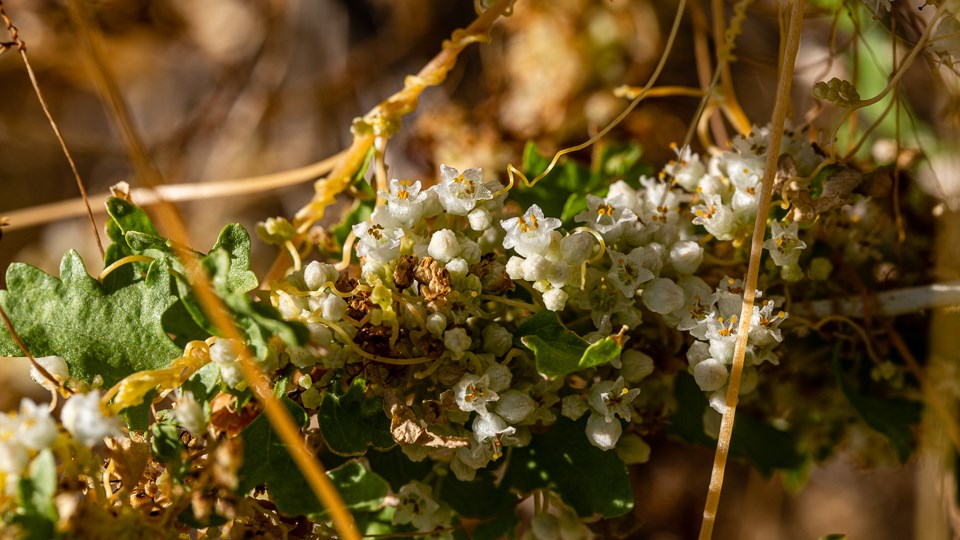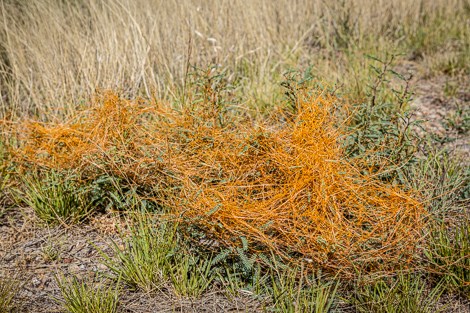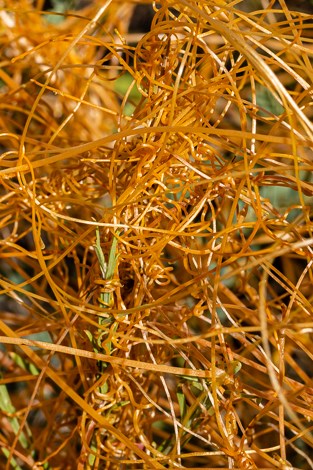
NPS/CA Hoyt 
NPS/CA Hoyt Dodders use phytochromes (pigments that plants use to detect light) and volatile cues to “see” and “smell” the plants around them. They avoid potential hosts that are too young or too sick, leading one researcher to describe the search for a host as “intelligent choice and intention.” The dodder seedling must work quickly—its root organ will wither away within a few days. From then on, the dodder is reliant on a host plant for almost all of its nutrients. 
NPS/CA Hoyt The host plant isn’t entirely passive during this process. They can fight back with barrier tissues that block the dodder’s advancing hyphae or chemical inhibitors that retard hyphae growth. Dodder and its host plant can “talk” to each other through the exchange of messenger RNA molecules. So what are the plants talking about? Researchers aren’t in on the conversation yet, but one suggestion is that the dodder is engaged in some “sweet talk,” sending messages that instruct the host plant to lower its defenses and allow the dodder in. A few species of dodder are agricultural pests and have given the whole group a bad reputation. But Dr. Mihai Costea, a botanist at the Wilfrid Laurier University in Canada, says we shouldn’t be so quick to dismiss dodder. According to Dr. Costea, dodder is a keystone species in some ecosystems and deserves our respect. Many host plants can be bullies. They grow fast and aggressively, crowding out the shy, retiring types. But dodder, through its ability to reduce the host plant’s biomass and alter the way it uses resources, can modify the structure of the plant community, keeping the bullies in check and allowing other plants to flourish. Four species of dodder grow in Big Bend National Park. Next time you see a plant strangled in Silly String, stop and take a look. Ranger CA Hoyt |
Last updated: July 18, 2025
